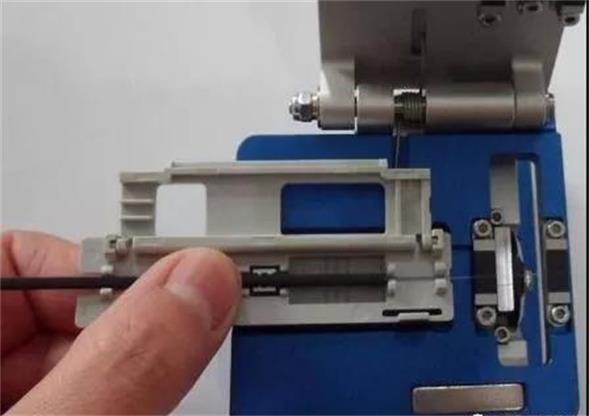Optical fiber, short for optical fiber, is a light transmission tool that utilizes the principle of total reflection of light in fibers made of glass or plastic.
Compared with copper cables, optical fibers are very fragile and easily damaged, especially during fiber optic construction.
Today, this article will talk about seven issues that must be paid attention to during the optical fiber construction process.
Problem 1: Not cleaning the optical fiber before splicing Before splicing the optical fiber, cleaning the bare fiber is a very important step.
It should be noted that the bare fiber must be cleaned first and then cut.
In fact, nothing is cleaner than a newly cut fiber end face, so never clean the fiber after cutting, otherwise it will stain the fiber end face.
When cleaning bare optical fiber, it is strongly recommended that operators use a fast evaporating, non-flammable precision cleaning fluid.
Problem 2: Using improper cutting tools Whether the optical fiber end face is smooth or not has an important impact on the performance of the optical fiber after splicing or termination.
In the past, people usually used fiber cleavers to manually cut optical fibers, which required operators to undergo systematic training and have skilled skills.
Now, with the development of technology, modern automatic cutting tools have become very common on the market. These tools can not only improve the safety of operators, but also protect optical fibers.
In general, automated cutting tools are important tools to ensure that the cut fiber end face is qualified.

Question 3: It is very important to calibrate the fusion splicer without calibrating the fiber before splicing.
In particular, the arc intensity or current intensity needs to be adjusted frequently to ensure that the size is appropriate during fusion, so as to ensure that the mechanical strength of the fusion joint is strong enough and the optical performance is good enough.
This is especially important when the air pressure changes or when working at high latitudes.
In fact, the calibration work is very easy to do. For most fusion splicers, you only need to simply put the optical fiber on, just like you are doing fusion splicing.
However, you do not need to actually fuse during calibration. Instead, you have to go to the maintenance menu of the fusion splicer and select the option of arc calibration or arc backtest. The fusion splicer will tell the operator step by step how to perform calibration. .
After the calibration is completed, the fusion splicer will also remind you whether the calibration is complete or whether the entire system needs to be retested.
Problem 4: Micro-bends in optical fibers. Micro-bends in optical fibers are generally caused by excessive pressure on the optical fibers. Micro-bends in optical fibers will cause a decrease in signal quality, and this problem is difficult to detect with the naked eye unless it is used. OTDR to check.
Problem 5: Excessive bending of optical fibers. All optical cables have their own minimum bending radius. Therefore, when constructing optical cables, we must pay attention not to exceed the minimum bending radius of the optical cable to avoid damage to the optical cable and the optical fiber in the sheath. .
Question 6: Reusing wipes/cloths. Reusing wipes/cloths is a penny wise and pound foolish act. This is because when a connector is cleaned with a piece of wipes/cloth, the The wiping paper/cloth will be dirty, and it will also be stained with oil and dust from your hands. If you use it to wipe other connectors, it will contaminate other connectors.
Of course, if you really want to save costs, you can buy the smallest size wipes/cloths.
Question 7: Failure to check and clean the connector end face before installation. The connector end face is also a place that is extremely susceptible to dust and oil contamination. Therefore, we should check and clean the optical fiber connector when installing the connector. End face.
The cost of a ferrule end face detector is less than the cost of two on-site maintenance constructions. Are you willing to spend a small amount of money to clean and inspect it in advance or to repair it afterwards or at a large price? Summary: The seven sins mentioned above are all long-standing problems in optical fiber communications. These problems make the optical fiber network slow down and often cause network failures. However, in fact, as long as network construction personnel strictly follow the standard procedures and add a little These problems can be avoided by being careful.